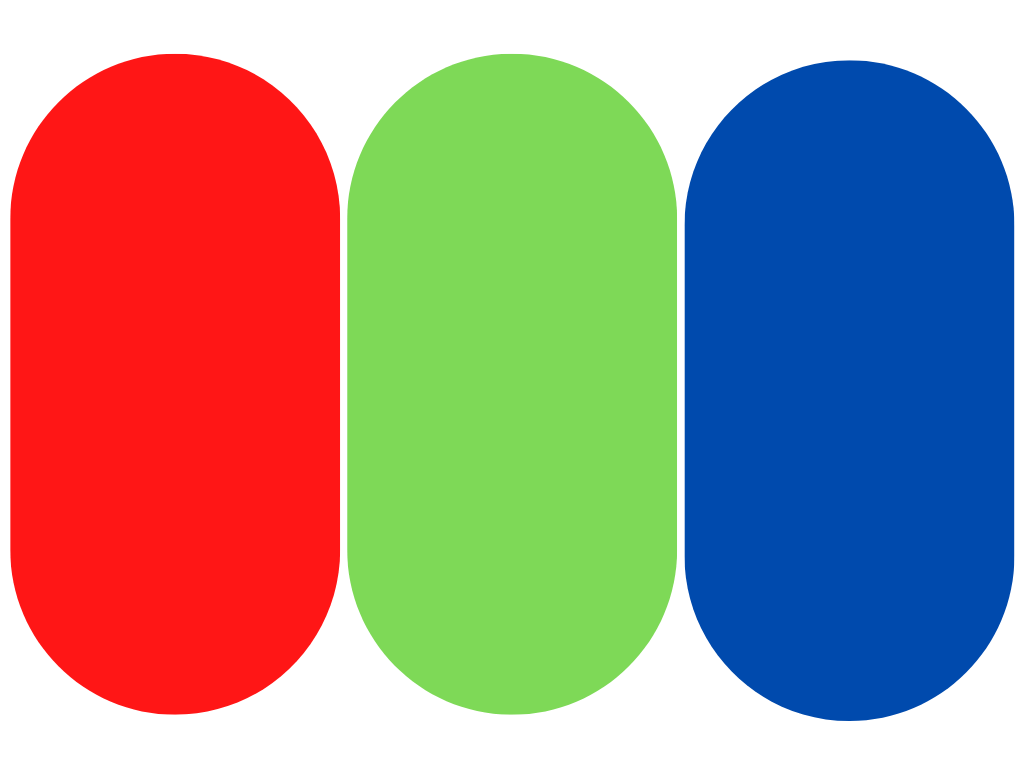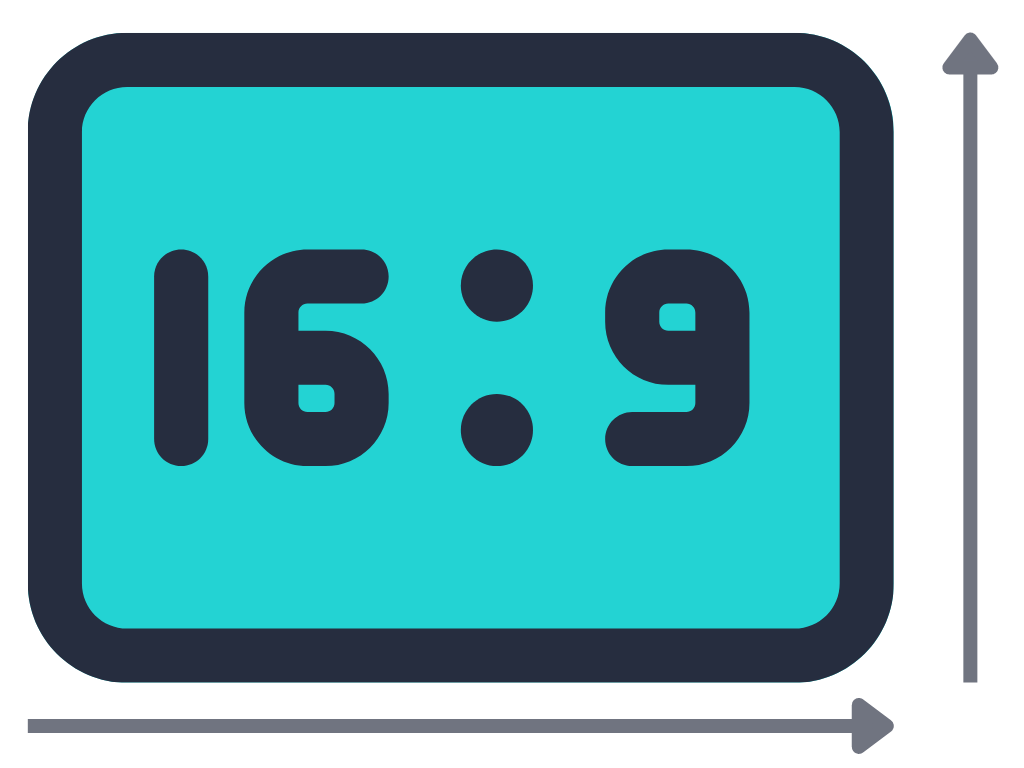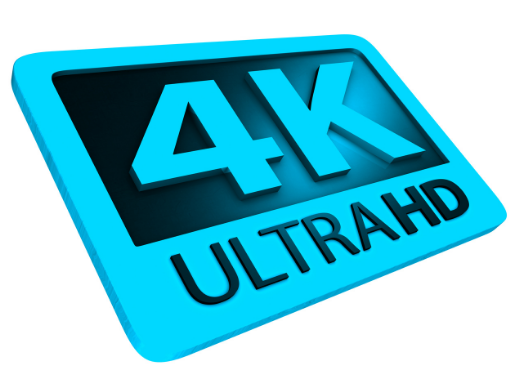4K resolution – High details due to many pixels
The term 4K resolution is an essential parameter when talking about the specifications of a TV. But what exactly does this term have to do with pixels? Which resolutions are common today, what is the development in this area and what can we actually still perceive with our eyes? We have summarized the most important information on this topic for you.
What do pixels have got in common with 4K resolution?

When we talk about the word pixel in the context of TVs, the term means a single brightness or color value on your TV’s panel in the form of a small color cell. These elements, also known as pixels, consist of three so-called subpixels, which are made up of the primary colors red, green and blue and are arranged next to each other.
If we now combine the individual pixels with each other by selective control, this results in different configurations with different color representations. This way, a TV can display single flat colors up to detailed movie scenes with numerous color and brightness gradations.
In combination with the term “pixel”, we often hear about the screen’s resolution. This is an essential factor if you want to reproduce image content as accurately as possible and – like the 4K resolution, for example – has a direct influence on the richness of details in a scene. In the next section, you’ll find out what this technical term is all about and how it is defined.
What is the definition of resolution?
Since we now know an important basic component of a TV panel and how a pixel is composed, we can draw a parallel to the aforementioned resolution. This results from a vertical and horizontal value of a certain number of pixels. The screen resolution of a panel is built up from these two specifications in relation to the width and height. The ratio of the two sizes can vary.
Fixed aspect ratio for the resolution
As a rule, however, the format is based on a fixed ratio such as 4:3 for older TV sets – often still tube TVs and certain flat screens – or 16:9, currently the most common standard for TV broadcasts.
The idea is quite simple: If the screen of a TV is divided into 16 equal parts in terms of width, the height of the TV is assigned 9 of these parts. In this way, a proportion ratio is created. In order to be able to compare these image proportions with each other, the aspect ratio can be calculated downwards in each case.
| Ratio | Converted | Usage | Where is it used? |
|---|---|---|---|
| 4:3 | 1,33:1 | SD channels | For old TVs |
| 16:9 | 1,77:1 | HD channels | On most HDTVs |
| 21:9 | 2,35:1 (Cinemascope) | Most films | Most of the cinemas |
| 14:10 | 1,4:1 | IMAX film | Few cinemas |
| 19:10 | 1,9:1 | IMAX Digital | Most IMAX cinemas |
Our overview reveals the most common aspect ratios and the fields of application for the different standards. Even though the 4:3 ratio has disappeared from the TV market, PC screens using this format are still manufactured.
This has practical reasons when displaying texts and office applications. Since monitors in 4:3 format with the same screen diagonal are a few centimeters higher, the additional space towards the top provides a better overview. In addition, people and faces can be displayed with more benefit because the visible part of the overall picture increases.
4K resolution: Better perception with 16:9

On the other hand, the 16:9 format corresponds more closely to a person’s natural field of vision and ensures that, for example, image content with a 4K resolution can be perceived more easily, since the upper and lower areas of the image center are comparatively smaller and the areas to the left and right of them can be recognized better subconsciously.
However, it depends on the size of the TV in relation to the distance of the eyes to the screen how well we can see the entire picture. If you want to find out the perfect distance for a certain size, then feel free to use our buying guide.
Furthermore, you might have already come across the 21:9 format. This size ratio is especially tailored to the needs of series and movie enthusiasts and ensures that the sometimes annoying black bars above and below the edge of the picture – depending on the recording format of the content – are eliminated.

Usually, you only see this widescreen characteristic with PC monitors nowadays. So-called ultrawide televisions are accordingly rare. In cinemas, however, this picture format – also known as Cinemascope – is widespread. The reason: Today’s movies are often shown in 21:9 format and thus also transferred to corresponding media such as Blu-rays. The footage itself is shot in native 4. During post-production however it is cropped to match this ratio.
To give you a better idea of the particular mismatch, we have put together a chart that combines the aspect ratio of a screen with that of the image content. Thus, you can see at a glance which constellation you can expect black display bars in, where they appear and in which size.
However, the resolution is influenced by an additional parameter to a certain degree. That is the screen diagonal of your TV. This brings us to the so-called PPI value, which we will examine in more detail for you in the following.
What does PPI refer to?
PPI is the abbreviation for pixels per inch and should not be mixed up with DPI, or dots per inch. The latter is used in the printing industry, while PPI refers to displays. But what exactly does this value actually mean?

This term is used to describe the so-called pixel density. This indicates the number of pixels within a certain area.
Generally speaking:
The larger the screen diagonal of a TV, the lower this value is at the same resolution and the “blurrier” the image reproduction becomes in relation to the sitting distance.
The reason for this: Our panel’s resolution does not scale. It does not increase proportionally to the size of the device. For example, a TV with a Full HD resolution of 1920 x 1080 pixels and a screen diagonal of 55 inches has slightly more than 40 pixels per inch. With a diagonal of 65 inches, the value decreases accordingly to just under 34 pixels per inch.
Calculate the PPI value at 4K resolution
If you want to know how many pixels per inch your screen has at a 4K resolution, you can easily calculate this value yourself in a few steps. At frist you will need the resolution of your screen. Take the amount of pixels in the horizontal and the amount in the vertical. Since 4K TVs have a resolution of 3840 x 2160 pixels, the following calculation can be made using a simple formula:

The result represents the number of pixels on the diagonal. Now you also need to know the screen diagonal of your TV. Finally, divide the result of our calculation by the inch size of your TV. In order to be able to compare the values at this point, we again set a size of 55 inches.
Accordingly, we get a value of about 80 pixels per inch and notice that a 4K TV has twice the pixel density at the same size compared to a Full HD TV. This jump also has a clearly visible effect on the quality of the natively displayed image content. Details like jersey numbers or smaller objects can be perceived better.
What resolution do current TVs have?
At the moment, TVs with 4K resolution clearly dominate the market. If you’re wondering why this is the case, even though 8K TV models have been available from manufacturers like LG, Samsung and Sony for quite some time, here’s a brief explanation:
Probably the most important reason for this is the lack of content available from streaming providers and TV broadcasters. So far, neither public nor private broadcasters air at 8K in germany. Even large streaming platforms like Amazon Prime, Netflix, Disney+ or Apple TV have not yet jumped on this bandwagon.

4K resolution is becoming increasingly popular
Broadcasters that provide native content in 4K or UHD are still rare in the German programming landscape, but TVs with 4K resolution have nevertheless established themselves in our country. The situation is different in the streaming sector. All major streaming providers have been making material available in true UHD for several years now. YouTube is an exception. The video and streaming platform also offers nativ content in 8K resolution by now.
However, there are additional reasons related to 8K television besides the lack of content described above, which not everyone necessarily thinks of right away. A TV with 8K resolution on its own may not be enough for you. Additional peripherals in the form of a special 8K receiver and a suitable satellite dish are necessary if you want to watch linear television with this resolution in the future.
Even if you would get your content exclusively from streaming providers, you still need a suitable bandwidth and would have to be able to access a constant 50 MBit per second. That alone could be a hurdle in many places. Especially if your Internet line is regularly used by several people in the household.
In addition, even current consoles like the Xbox Series X or Playstation 5 are still focused on 4K at 120 hertz. Games that are natively output in 8K resolution are unfortunately still a vision of the future – at least on consoles. However, this could change with the next console generation and the balance could shift at least a bit more in the direction of UHD-2. Until then, manufacturers of game consoles will not give TV producers any reason to focus further on 8K TVs.
Linear television: These are the resolutions broadcasters work with

Owning a high-quality TV with 4K resolution and good picture quality is a nice thing. However, this fact alone does not create an outstanding picture.
Apart from the settings of your TV, the input signal also affects the display performance in a significant way. In short, just because your panel can theoretically output 4K doesn’t mean you’ll automatically benefit from it.
With the variety of TV programs, streaming providers and storage media, it can be quite difficult to keep track of everything. Will the transferred image be displayed in native resolution, are only fields transmitted or do I watch in simple SD?
In this section, we’ll explain how you can tell if your content is coming around the corner with 4K resolution or not, and why the data rate also plays an important role.
Despite the fact that the concept of linear TV – thanks to the TimeShift feature using a twin tuner and the option of recording TV programs via USB or directly on the receiver – no longer really applies and is now much less popular, especially among the younger audience, Television still has its place in the market.
Differences in the resolution of TV channels
Basically, all public broadcasters such as ARD, ZDF and WDR broadcast their programs in 720p and 50 frames per second. Whether you receive the channels via cable or satellite generally makes no difference. However, you can watch in better resolution via DVB-T2. There, you get real Full HD resolution with 1080p for your broadcasting fees.

The situation is somewhat different for private broadcasters such as RTL and ProSieben, or even the pay TV channel Sky.
Apart from the fact that you will be asked to pay additionally for the reception of HD channels from these providers, those TV broadcasters also provide their signal in Full HD, but “only” with 1080i and 50 frames. Strictly speaking, however, this method is not true Full HD.
The “i” behind the value of the horizontal number of pixels refers to the term interlaced. With this transmission method, images are transferred to your screen using the so-called interlaced method.
Resolution transmission comparison: 720p vs 1080i
In contrast to the so-called progressive, or “p” method, in which true full frames are transmitted, interlaced works with half frames. This has advantages but also disadvantages:
Advantages:
With the same bandwidth, 50 instead of 25 images can be transmitted. Visually, we hardly notice that only every second line in the image is updated.
Having a higher frame rate provides a smoother overall viewing experience, as we are able to capture up to 60 frames per second with our eyes.
“Full HD” as a marketing term sells better than “HD Ready”. Ultimately, that was also the reason for the introduction of 1080i.
Disadvantages:
As the resolution of a TV gets higher, it is more likely that unsightly artifacts will appear on the displayed content.
Uniform color areas and horizontal edge areas can also be affected and lead to unwanted image errors in the display.
Visible line flicker can occur in the case of strong brightness differences between the transmitted fields and thus negatively influence the display.
If the bandwidth available for the signal is irrelevant, progressive technology provides the best quality output on the panel. But beware: Broadcasters such as Sky cheat when it comes to quality, to the displeasure of customers. Especially with sporting events and the transmission of soccer matches. The material broadcast in 1080i sometimes suffers from massive quality loss due to the lower data rate. Especially when several games are broadcast simultaneously, the picture hardly looks better than SD quality.
Channels with 4K resolution
In addition to TV channels broadcasting in 720p and 1080p or 1080i, RTL Group and ProSiebenSat1 Media SE also offer one channel each in UHD resolution. At the moment, however, these channels are only occasionally supplied with content. Sky provides you with content more regularly content on its two sports channels Bundesliga UHD and Sky Sport UHD.
An additional number of special interest channels, such as the series and movie channel Insight or the music channel Clubbing TV 4K, are also available. From a purely visual point of view, you can tell whether the program is being broadcast in higher resolution by the corresponding abbreviation “HD” or “UHD” next to the channel logo. This indication is missing for TV channels that broadcast in SD, meaning standard definition.
But watch out: Strictly speaking, the UHD standard does not exactly match a 4K resolution, since a total of 256 pixels are saved in width. But why? The 4K format originally comes from the cinema sector and already existed before the introduction of UHD. It refers to all horizontal resolutions in the range of 4000 pixels. Finally, the term was adopted as a synonym for marketing reasons.
Resolution standards overview
| Abbreviation | Resolution | Pixel | Media |
|---|---|---|---|
| SD | 720 x 576 | 414.720 | Private + Public broadcasters, DVD |
| HD Ready / HD720 | 1280 x 720 (720p) | 921.600 | Public broadcasters |
| Full HD | 1920 x 1080 (1080p) | 2.073.600 | Private + Public broadcasters, Blu-ray, HD-DVD |
| UHD / Ultra HD | 3840 x 2160 (2160p) | 8.294.400 | Private broadcasters, 4K Blu-ray |
| 4K | 4096 x 2160 | 8.847.360 | Wider cinema ratio |
| UHD 8K / UHD-2 | 7680 x 4320 (4320p) | 33.177.600 | Japan Broadcasting Company NHK |
| 8K | 8192 x 4320 | 35.389.440 | - |
By the way: You won’t find TV devices with a resolution of 4096 x 2160 pixels anywhere on the market. However, image content with this resolution will be downscaled by your TV. If you’ve already found the perfect 4K resolution TV, you might still need the appropriate speakers. Our soundbar buying guide will help you find them.
The highest resolution of a TV to date
At the so-called National Association of Broadcasters Show in Las Vegas, NAB for short, Sony already presented a TV in 2019 that is capable of bringing a maximum resolution of 16K to the panel. In resolution terms, that equates to 15,360 x 8640 pixels or a total of 132,710,400 individual pixel dots. However, such an immense resolution is still pure fantasy for the average consumer.
Besides the fact that the Sony giant measures 20 meters diagonally and processing such resolutions requires absolute high-end hardware, there is hardly any native content for it. Therefore, it will still take a lot of years until it is really suitable for practical use.
What is the resolution of the human eye?
Basically, our eyes do not work in terms of resolution, as a modern screen does, but in so-called angular or so-called arc minutes and are only able to capture a rather limited area on the screen of a TV. But where is the natural limit of our optical sense organs?
A large proportion of people hardly notice the difference between the 4K resolution with 3840 x 2160 pixels and the significantly lower Full HD resolution with 1920 x 1080 pixels, if at all. This was also shown in a double-blind study commissioned by several companies from the entertainment industry in cooperation with the American Society of Cinematographers. If we look at a scene in 4K resolution, this image resolution is often not achieved by our eyes.





